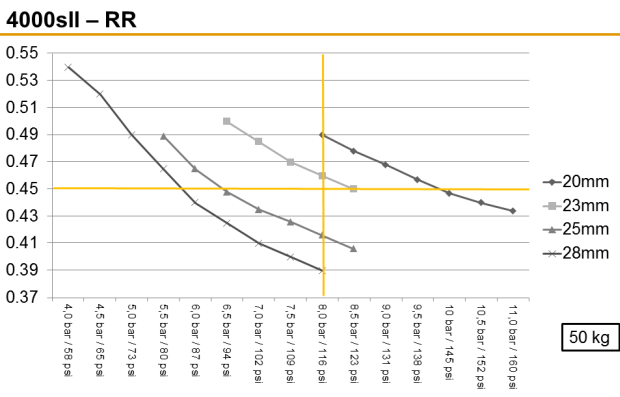The theory is that a tire with some flex absorbs small bumps, instead of bouncing the bike upward. The rider's body soaks up the vertical movement and that takes energy away from forward motion.
The thin, flexible tires can flex over the bumps without wasting as much energy as stiffer, cut-resistant tires would.
~~~~~~~~~~~~~~~~~~
Continental tested their tires at different pressures. I don't know how they tested--is it a metal roller or something more like a real road? It does say "50 kg"
From
another thread:
Continental's rolling resistance chart is interesting. The 25c rolling resistance is almost 20% worse (.49) at 80 psi than at 116 psi (.41) What units are they using in the chart? It appears to be Crr x 50 kg?
But: the 25c rolling resistance at
87 psi is equivalent to their 23c at about
112 psi. So larger tires can run at lower pressure and still be efficient.

~~~~~~~~~~~~~~~~~~~~~~
I slightly overinflate my
25c compared to what I was doing with my
23c. They seem very fast and very comfortable on rough roads.
I'm 170 pounds, and like 85psi front and 100-105 psi rear on Continental GP4000 25c. I should try 80 and 95-100 to see if affects handling. I was running 95 front and 105-110 rear on 23c.